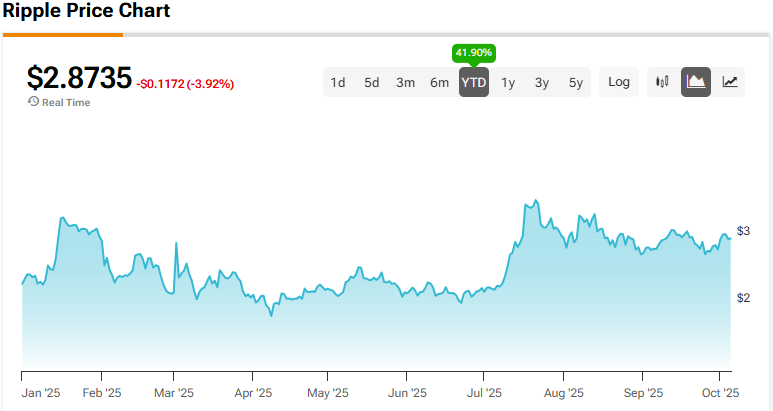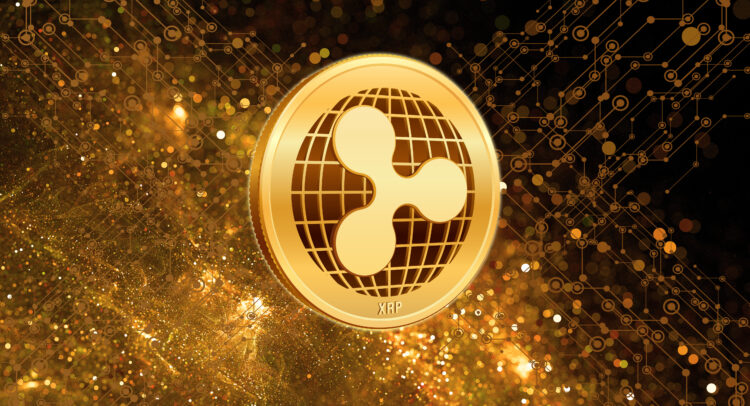XRP (XRP) popped magnificently following Trump’s election win last November, surging on the premise that the new administration would take a far more favorable stance toward cryptocurrencies. That assumption has largely played out, with the revamped SEC even dropping its long-standing lawsuit against XRP’s parent company, Ripple Labs, over allegations of unregistered securities sales.
Elevate Your Investing Strategy:
- Take advantage of TipRanks Premium at 50% off! Unlock powerful investing tools, advanced data, and expert analyst insights to help you invest with confidence.
However, despite that legal victory and a strong summer rally, the cross-border payments-focused coin has been largely treading water since January’s highs. So, what comes next for XRP? Or as Dominic Basulto, an investor who ranks among the top 3% of stock pros covered by TipRanks, asks, “how high can XRP go over the next year?”
According to Basulto, the answer hinges on “three key catalysts that could determine the trajectory of XRP in 2026.”
To start, the SEC is preparing to review several spot XRP ETF applications this month, with decisions possibly beginning on October 18. Approval could grant XRP “instant mainstream acceptance” and potentially draw in as much as $8 billion in fresh investment. Yet because the market has long priced in a near-certain approval – with most investors assigning odds of 95% or higher – Basulto cautions that the initial price reaction may be muted. “Thus,” he notes, “the short-term price impact on XRP might be less than many people expect.”
Beyond regulatory developments, political momentum in Washington also looms large. While the Trump administration’s pro-crypto stance is undeniable, it doesn’t necessarily ensure XRP’s direct involvement in future U.S. crypto policy. Banks still need confidence in their blockchain for cross-border transactions. Much now depends on the Digital Asset Market Clarity Act – the next major crypto bill expected to follow July’s Genius Act on stablecoins. But with Congress mired in a government shutdown, legislative progress could stall. “So keep an eye on how events unfold in Washington during the next few months,” Basulto advises.
Finally, there’s the long-standing narrative that XRP could serve as a modern replacement for SWIFT’s global payments system, enabling near-instant, low-cost transactions. SWIFT itself is feeling the pressure to innovate and has begun exploring blockchain solutions – reportedly including tentative trials involving XRP’s network. If those efforts gain traction, XRP adoption could surge. Given SWIFT’s $150 trillion annual transaction volume, even a 1% migration to XRP’s system would translate into roughly $1.5 trillion in potential volume. Still, modernization efforts could involve several blockchains, not just Ripple’s, and recent reports suggest SWIFT is also testing Ethereum-related technologies through Consensys.
So, back to the central question – where does Basulto see XRP’s price heading over the next year? In a “worst-case scenario,” XRP could hover near $3 if ETF approvals underwhelm and Congress fails to pass meaningful legislation. In a “best-case scenario,” the combined force of these catalysts could propel it toward its record high of $3.84.
“There’s obviously a lot to be hopeful about when it comes to XRP,” Basulto summed up. “But investors should definitely keep their expectations in check. A lot still needs to go right for it to finally hit its full potential over the next year.” (To watch Basulto’s track record, click here)
At the time of writing, XRP is changing hands at $2.87.

To find good ideas for crypto stocks trading at attractive valuations, visit TipRanks’ Best Stocks to Buy, a tool that unites all of TipRanks’ equity insights.
Disclaimer: The opinions expressed in this article are solely those of the featured investor. The content is intended to be used for informational purposes only. It is very important to do your own analysis before making any investment.
















